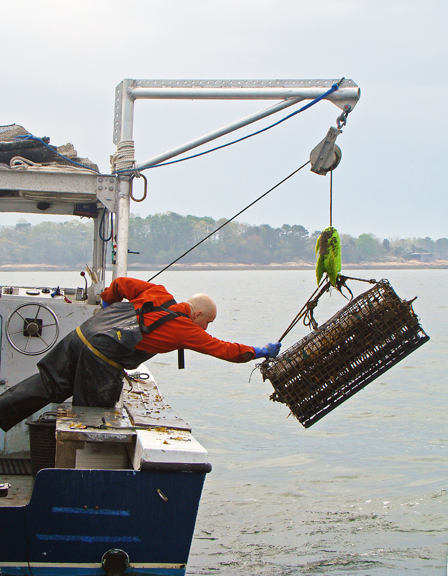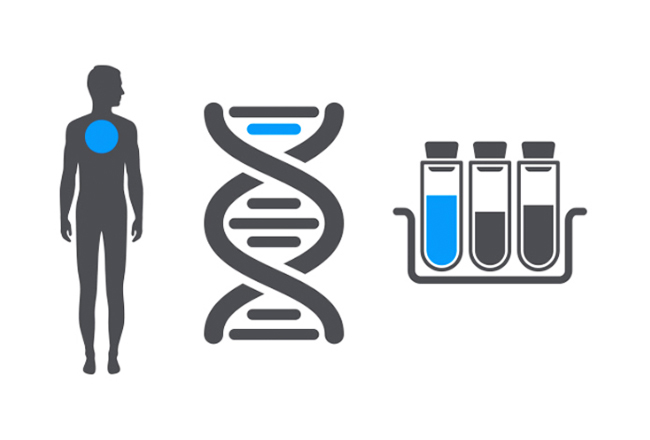
Seaweed ”“ it”™s not just for sushi anymore.
At least that”™s the idea behind Connecticut”™s growing kelp-farming industry, where entrepreneurs like Norwalk”™s J.P. Vellotti are betting that the product will revolutionize not just the culinary scene, but also the medicinal/pharmaceutical and even the energy fields.
“It”™s still such a new field here,” said Vellotti, a longtime employee of Norwalk oyster supplier Norm Bloom and Son; that firm partnered with him to create East Coast Kelp Farms, where Vellotti is general manager.
“We wanted to get in early,” Vellotti said. “I give a lot of credit to the state of Connecticut ”” they saw the potential and had the forethought to put the licensing process in place.”
Vellotti”™s is one of five new farms that the state Department of Agriculture has licensed to grow kelp this year, nearly doubling the number of firms working the kelp beat in Connecticut. Another, Atlantic Clam Farms of Connecticut Inc. in Greenwich, is awaiting approval.
“The number is really growing,” said Tessa Getchis, an aquaculture extension specialist with the Connecticut Sea Grant and UConn Extension Program in Groton. “There”™s a lot of enthusiasm and excitement out there.”
She allowed, however, that “the businesses involved are still small scale ”” they”™re testing the waters. Most of them are primarily shellfish farmers and nobody”™s doing it full time.”
That”™s partly because kelp farming is a seasonal business. Seeding is usually done in November/December, and harvesting takes place, in May/June. The process involves collecting mature, adult plants which reproduce onto string wrapped around a segment of PVC pipe; once the seeds have developed into juvenile plants, they are wrapped around a rope, which is then suspended 3 to 6 feet below the surface of the water between two moorings.
Buoys and other weights are used throughout the winter to manage the line”™s position, during which time each plant can grow from 1mm to 10 feet or even more. After harvesting in May, the ropes are brought in to clear the way for summertime activities.
Vellotti noted that his farm in Long Island Sound measures about 50 acres, but noted, “It”™s like a Russian nesting doll. Inside that there”™s a 50-foot buffer with safety buoys. Right now, I have 12 kelp lines spread 50 feet apart. So, there”™s probably only about six acres actually being used to grow kelp.”


One of the key players in the Connecticut kelp industry is Bren Smith. A fisherman turned sustainable shellfish and seaweed farmer and entrepreneur, Smith”™s Branford-based Thimble Island Oyster Co. operates one of the first sustainable “3D ocean farms” — designed to meet the growing need for sustainable seafood while also restoring ecosystems — in the country.
“I”™m not an environmentalist,” Smith declared, “but I want to protect and help revive the environment so I can continue to make a living.”
Having spent most of his adult life “fishing the globe,” Smith said, “The last thing I wanted to do was grow vegetables. But the economics of this were a game-changer ”” there”™s no need to add water or fertilizer. It”™s a winter crop and there aren”™t a lot of those, so I can do it during the off-season. It requires a really low input, which keeps the overhead down. It”™s the nail salon model of the sea.”
In 2013, Smith established the nonprofit organization GreenWave to train new seaweed farmers and provide them with two years of support. He said that anyone armed with about $30,000, a boat and a lease ”” which requires approvals from state regulators and the U.S. Army Corps of Engineers ”” can farm 20 acres of near-shore seafloor, which can produce 10 to 30 tons of kelp and 250,000 shellfish per acre in five months.
While educating the public about the benefits of kelp ”” it”™s high in vitamins A, B and C, as well as iron and protein and low in calories ”” is still a work in progress, Smith said that demand from restaurants, food wholesalers and the like has resulted in “our having standing orders for 500,000 pounds of kelp right now. And there will probably be a total of 100,000 to 150,000 pounds harvested from the entire East Coast this season.”
Still, he said, sales are “miniscule. We need more farms, more permits, more hatcheries.”
And more uses. Although both Smith and Vellotti said that restaurants and food services are becoming increasingly adventurous with what Smith calls “the new kale” ”” GreenWave”™s team has prepared kelp linguini, ice cream and even cocktails ”” food is only one application. Carrageenan and algins ”” both of which can be extracted from edible seaweeds ”” are used in pharmaceuticals as binders and emulsifiers, as well as in cough medicine and in dental molding preparations. Skin treatments, toothpastes, shampoos and other cosmetic products can also include seaweed.
Kelp is also used as fertilizer, paint, paper, cardboard and biofuel ”” although the latter application is still very much in the early stages in the U.S.


As Smith noted, kelp can make economic sense when measured against other products. UConn Professor Charles Yarish, one of the nation”™s leading kelp researchers, has indicated that once the market is fully established, seaweed-derived biofuel could be produced for as little as $80 a ton ”” considerably cheaper than corn and wheat, which trade at $160 to $190 per ton.
This past November, Yarish and his UConn team, along with a team at the Woods Hole (Massachusetts) Oceanographic Institution received a $5.7 million grant from the U.S. Department of Energy to determine whether seaweed can be mass-produced as a biofuel in the federal waters 12 to 200 miles off the New England coast.
According to San Francisco”™s Grand View Research, the global commercial seaweed market was $10.31 billion in 2015 and is expected to reach $22.13 billion by 2024, a compound annual growth rate of 8.9 percent.
How quickly the state’s kelp farming industry can grow is still an unknown, according to Getchis at Connecticut Sea Grant. “It”™s a very rigorous permit process,” she noted, confirming what Vellotti said. “There”™s a lot of concern about protecting marine life and their habitats, as well as ensuring that people can continue to swim and boat safely.”
But, she added, “It”™s always a good idea to diversify. Most kelp farmers today are also growing oysters and clams, so by diversifying they could be giving themselves an insurance policy by growing two products at the same time.”




















Great article! Let’s not forget the first permits for this work went to the Bridgeport Regional Aquaculture Science and Technology Education Center — a public high school open to students from seven school districts. What a resource and a great school!